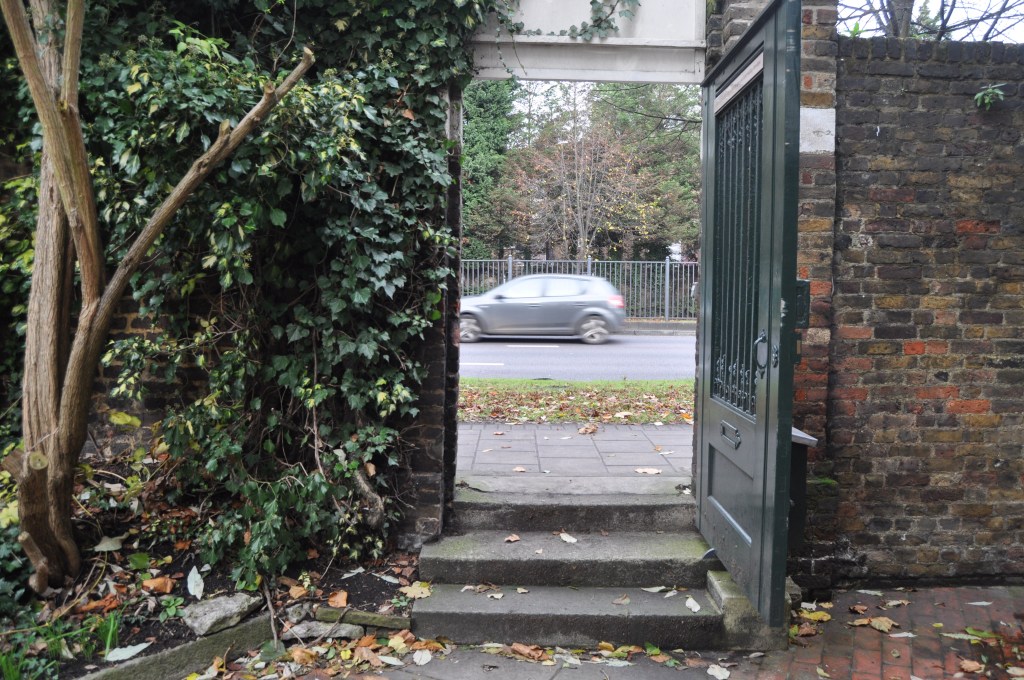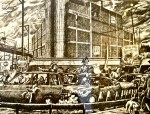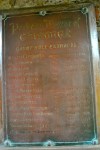Sometimes you can stand still. For centuries, even. And around you, the world will change, just the same.
In 1737, men first came to a bleak spot in the Penines, that mountain-spine of England separating the North West of England from the North East.
They built a sheep farm called Stott Hall Farm, and for two centuries all went well. The sheep were uninterrupted by much save the rain.
And then the builders of the M62 motorway arrived. They might have bulldozed straight through it, but landslips meant one carriageway must go on high ground, another on low ground, and the two separated, running around the farm, enclosing it forever in the hum of traffic and the exhaust fumes.
That was in the seventies. And it’s still there. The farmer says he’d love to find the volume dial, but other than that it’s not a bad place.
I was thinking of Stott Hall Farm today, as I rattled up the M4 bound for Chiswick towards a house built at exactly the same time as that bleak Penine farm.
It, too, has exchanged a view of fields stretching into the distance with an outrageous A-road which thunders past, day and night.
It began in 1710 as an orchard on a meander of the Thames a stone’s throw from London. Commuter districts were different back then, when horse and carriage were the way to get around.
When William Hogarth, that lacerating cartoonist with an unsettling way of drawing the unvarnished truth, looked outwards from his house in Leicester Fields for a country residence in 1749, this seemed the perfect choice: no more than an hour’s carriage ride from the heart of the city, yet pretty as a picture and surrounded by fields.

Image from http://brentfordandchiswicklhs.org.uk
Hogarth was a searing satirist. His was the Rake’s Progress series, and the Harlot’s Progress too. He portrayed man as falling or fallen.
But his domestic life was very different. Hogarth bought his house in a dilapidated state for seven pounds, surrounded by fruit trees and stout red-brick garden walls. There were two rooms on each floor, and a central staircase.
And he and his beloved wife Jane extended and improved it. They added an oriel window to the parlour to make it light and graceful. They loved it into life.
Outside, the fruit trees remained, and prospered. The couple used to foster children, and they would help pick mulberries from the mulberry tree to make pies for pudding.
They were happy there. Hogarth, his mother-in-law, his wife, her cousin and his sister. Hogarth could paint in the painting room over the coach house at the bottom of the garden: and beyond the garden walls all was pastoral.
You can’t stop progress.
The road to London grew busier and busier, long after Hogarth’s demise. With the advent of the motor car there was an explosion of urbanisation, and Chiswick became absorbed in the London band of development. The A4 grew loud and irascible, beyond the walls. These days, at times, it simply roars.
But step inside and it’s all still here: even the old and wizened mulberry bush, in the middle of a green garden overlooked by he most enchanting oriel window.
Just yards away is one of the most dubious tributes to a great man I have ever come across. You know we British love our roundabouts; and Hogarth’s house sits in Hogarth Road, trying manfully to ignore the Hogarth Roundabout.
It is a monstrous merry go round, this thing, sending motors off to the city, or roaring towards Richmond. The pall of exhaust rarely abates. It is the heart of ugliness and gracelessness.
Yet the house sits within its walls and thinks beautiful thoughts.
It falls to another cartoonist, Martin Rowson, to make the pertinent comment. For the 300th anniversary of Hogarth’s birth he has illustrated the Hogarth roundabout with satire worthy of his brilliant predecessor.
Can you spot the difference?






























Great set of pictures. Hogarth Roundabout was part of my route to and from my studio each day. I remember the “temporary” flyover going up some 25 – 30 years ago and there it still is, as temporary as ever, in Martin Rowson’s wonderfully crafted cartoon.
It has achieved a shabby permanency, though it still gives off those Mad Max dilapidated vibes, Roger….
i like that tree in front
Isn’t it beautiful, Jeffrey? I bet it’s contributed a fair few mulberry pies in its three centuries. Thank you for your visits, by the way, and for taking the time to comment today.
You can’t stop progress but it appears you can ignore it.
Provided you build a very tall wall around your house, Tilly 🙂
Not in my back yard, but over the fence is fine! 😉
You can still hear the traffic, Myfanwy, but it is muffled. And somehow you just leave the A4, and all those scurrying London lives, behind.
Progress, or what it passes for, is not always pretty. Love the pics, peeking out from inside the circle.
Luckily it is not in the centre, Lou, but on the road nearby: it might just as well be, though. I find myself mourning those orchards on the Thames and the views from the upper oriel window.
Haha..’Ye Bigge Issue’ indeed ;).
It is so clever, isn’t it? Must get myself a print of that. It has a ‘Giles’ quality about it.
From Swindon, the capital of roundabouts, I salute you.
All hail: for there can be no place in the whole of Britannia which has more roundabouts than you.
I have a rather soft spot for the Wyvern Theatre, buried in the middle…
Can’t tell the difference…is the door shifted? But I do love a house ‘that thinks beautiful thoughts’ regardless of the changes taking place around it 🙂
The house really has been unchanged. Dilapidated at times, but generally a well-loved little place. The change is outside the gate….
“They loved it into life.” What a beautiful turn of phrase!
Love that wonderful, twisted tree in the front yard and the obvious determination to protect it.
It is rather wonderful, isn’t it, PT: and most astounding is the thought that Hogarth and his wife picked from that very tree. Life is rather wonderful, sometimes.
Is the path at a different angle now!!!
I think you may be right there, Lisa…
Fascinating pictures. What a pity the internal combustion engine was invented.
Quite. Not a good move for the little house, was it?
I grew up singing, “Here we go round the mulberry bush . . . ” but never realized that housewives turned mulberries into pies.
And I love the Oriel window they added. What a delightful spot to enjoy the view.
It is a lovely little addition, and quite makes the house.
I have never picked, eaten or cooked a mulberry. A gap in my education!
Oh those windows and those views! Lovely, and what a story it has to tell…it has seen plenty, I’m sure. But I must tell you how timely this piece is for me, Kate. I have been trying to come up with Hogarth’s name for a solid week! I just couldn’t dredge it up. With our election process and the enormity of the vitriol I kept returning to early political satire and the cartoonists. I don’t know if the Huntington Library still has Hogarth’s work in one of the main halls, they once did, but I was trying to google to see if I could find an exhibit–and I couldn’t come up with his name. I tried every type of search possible but with nothing to anchor it to I was left high and dry. And here you go! I can rest now! 🙂 And now that I know it’s his 300th anniversary, I really will see what I can find.
Debra, I am deplorably late replying, please accept my apologies! A lot of Hogarth’s work is online – Wikipedia include the famous series like the Rake’s progress. Too much perusing of his work, though, can sadden the spirit a little. I wonder how he kept so cheerful…
“They loved it into life.” – what a wonderful thought, Kate, and wonderful pictures.
Thanks, Penny. One day I hope you see the little house. You will see exactly what I mean 🙂
an hours carriage ride, changed to a few minutes commute if there is no traffic – that is modernization for you 🙂
It is. The motor car has its advantages, I suppose, Tandy: i was able to journey from Berkshire to see his house in little over half an hour.
What a marvellous visit. Thank you Kate.
You are welcome: though the pleasure was all mine.